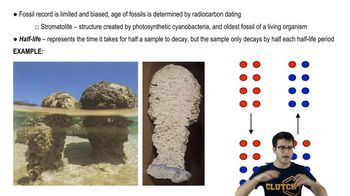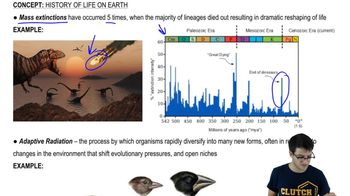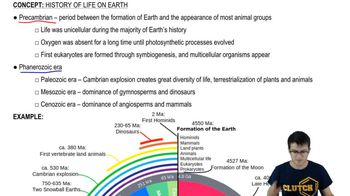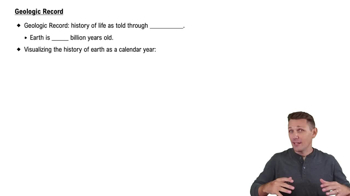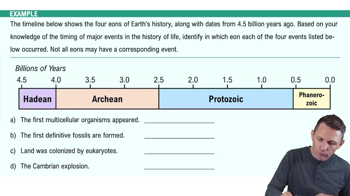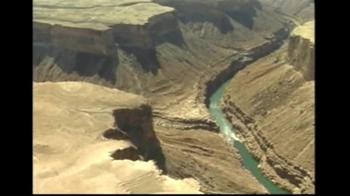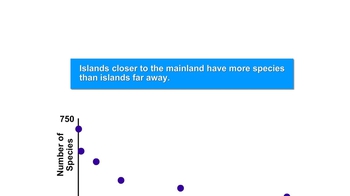[background music and birds sound] [Narrator:] Picture a world of giant reptiles. Flying pterosaurs with 40-foot wingspans. While beneath the waves, fierce predators called mosasaurs prowled the seas. And dinosaurs roamed the land. For more than 100 million years, creatures like these ruled the planet. And then... they were gone, lost in the shadows of time. Their extinction a mystery for the ages. [Carroll:] This is all we have left of those magnificent creatures. Bones. And a lot of them. We've collected enormous numbers of bones. And from them we can tell how these creatures lived, what they looked like, when they lived, but we don't know why they disappeared. To solve that mystery required some of the greatest scientific detective work ever. And the trail began almost halfway around the world from here. [Narrator:] This is Gubbio, a sleepy Italian town. Not a single giant reptile in sight. Still, the past is everywhere you look. In the medieval palaces and churches. The homes and narrow streets -- while an even deeper past lies nearby. Just outside of Gubbio, Alessandro Montanari is looking for that distant past. He's a time traveler, moving towards the lost world of the dinosaurs. Its ancient history written in these limestone cliffs. [Montanari:] Millions of years ago, these mountains were at the bottom of a deep sea, collecting layers of sediments, deposited slowly through time. And eventually pushed by tectonic forces, folded, and uplifted. [Carroll:] So, all of this rock and all of these layers were once at the bottom of the ocean. [Montanari:] Exactly. [Carroll:] And then, all these other forces have brought this old rock up to you -- [Montanari:] Yes -- that we can actually study, layer by layer, like pages of a book, the history of the Earth. [Narrator:] Gubbio's deep-sea limestone, now exposed by the side of the road, became a magnet for scientists. Especially this site, that may seem ordinary, but holds one of the strangest features to confront a geologist. A thin layer of dark clay. In the 1970s, the clay captured the attention of an American geologist, Walter Alvarez. He was trying to determine the relative ages of the limestone layers, by analyzing the fossils left by tiny, shelled sea creatures. Called foraminifera, or forams for short, they're among the most common ocean plankton. When they die, their shells become part of the sediment. Since many different species have evolved over the ages, they can serve as markers of geologic time. But as Alvarez studied them, he noticed something striking. [Montanari:] Well, what he sees and was puzzled by, after the very top of that white layer, all these very diverse microfossils -- species -- would disappear. okay [Carroll:] So, Sandro, when Walter Alvarez looked in these rocks, he saw all these species of forams, they're plentiful, there are many species, for thousands and thousands and thousands of years. But after this little seam of clay here, all the way up through these rock layers, those forams are missing? [Montanari:] Those species are gone. [Carroll:] Disappeared. [Montanari:] Disappeared. [Carroll:] And that's a fundamental mystery-- what would make these little creatures disappear? [Montanari:] Yes. [Carroll:] So Alvarez was stumped. What did this thin line of clay represent? It was laid down 65 million years ago -- the same time when the dinosaurs disappeared. Was there any link? [Narrator:] The same questions were being asked 1,500 kilometers away, in Spain. On the Atlantic Coast, outside the town of Zumaia, Dutch geologist Jan Smit was studying the forams from a different ancient sea. Their fossilized shells formed these limestone rocks, which, like Gubbio's mountains, were once at the bottom of the ocean. Now exposed, they represent over a million years of a geological time period known as the Cretaceous. Like Alvarez in Italy, Smit had also found a strange clay layer formed at the same time, which told a dramatic story. [Carroll:] Jan, what can we tell about Earth's history from just looking at these rocks? [Smit:] Well you can see the end of one world and the beginning of the next one. And you see there is a very sharp, extremely sharp dividing line between the two. [Carroll:] That gray band. [Smit:] That's that gray band over there. The bottom of that gray band. You see it's razor sharp. [Carroll:] And all this reddish, maroon rock, the oceans are healthy and steaming along -- [Smit:] They are healthy, they're steady, they don't change at all, and all of a sudden, we see a dramatic change, which we call the K-T boundary. [Narrator:] The K-T boundary, found at the bottom of this gray layer, marks not only the end of a period -- the Cretaceous -- but also of the Mesozoic era, a much longer stretch of time. The history of animal life on Earth has been divided into three such eras: Early Life, or Paleozoic. The Age of Dinosaurs, or Mesozoic. And the Era of Mammals, or Cenozoic. The Cretaceous-Tertiary boundary lies right in between these two eras -- Marked here by this layer of clay. [Carroll:] What drew you to this boundary, Jan? [Smit:] Well, Sean, we're looking here at the very topmost rocks of the Cretaceous. These rocks are literally packed with foraminifera. So we call this the Cretaceous, and these rocks here are the Tertiary. And the base of the Tertiary consists of a dark, gray clay layer, and there, the life has almost disappeared. And the K-T boundary is just in between. I can point at it. It's right here where you see a contrast between the purple and the dark. It's an extremely sharp boundary. [Carroll:] And just across that thin little boundary, there's this huge change in what you see in the forams, and why is that so stunning to you? [Smit:] It's so stunning because there is no preceding evidence of anything happening there. So it doesn't matter if I take a piece here, a piece there, or just underneath what we call the K-T boundary, the foraminifera will remain the same, so they don't change overnight, and then bang, they're gone. [Carroll:] So what's that tell you? [Smit:] That tells me that the base of the food chain of the oceans disappeared, and everything which is dependent on it is totally zapped right at the boundary. [Narrator:] In Amsterdam, the change at the boundary becomes clearer when Smit takes a closer look at the evidence. In his lab, he analyzes forams extracted from the limestone. Under the microscope, the rich diversity of fossilized shells from the Cretaceous snaps into focus. Some four dozen species appear below the boundary. But above it, there's a different world. [Smit:] These are the foraminifera from just below the boundary. And these are from just above the boundary. [Narrator:] Only a few species have survived into the Tertiary. And they're much smaller. [Smit:] As soon as you see that extinction, and you realize at the same time that the dinosaurs are disappearing, you know you are looking at something very important. But you see that nobody has witnessed it. So we're looking for silent witnesses in the rock. And the first thing that comes to mind is this beautiful clay layer. [Narrator:] A layer varying in color and thickness, and found around the world. Walter Alvarez also believed it was a silent witness to the end of an era. The key question was, how long did it take to form -- for the world to change? To find out, he sought help at the University of California at Berkeley, from a Nobel Prize-winning physicist. Someone he knew pretty well -- his father, Luis Alvarez. Luis loved a good mystery, no matter what field it was in. And that's how physics joined geology in the quest to explain the K-T extinction. [Muller:] Alvarez looked at this layer, tried to figure out how he could determine the time scale. He brought in his knowledge of astrophysics, his knowledge of nuclear physics, and realized that there's an element that's relatively rare in the crust of the Earth that occurs in meteorites. [Narrator:] The element was iridium, which falls steadily in an invisible rain of cosmic space dust. If the layer had taken thousands of years to form, Alvarez thought there might be just enough iridium to measure. But when the clay was tested, the scientists were stunned to find it contained 30 times more iridium than the surrounding rock. Moreover, samples from other K-T sites had similar levels -- too much to come from ordinary space dust. What could explain so much iridium deposited around the world? Perhaps a catastrophic event in outer space. Alvarez wondered if a supernova, exploding nearby, might be responsible. [McKee:] So he asked me if that was possible. And I concluded that there was only one chance in a billion that such a supernova would occur that close in 100 million years. [Narrator:] A supernova would have also deposited a rare isotope: plutonium 244. But testing revealed there wasn't any. [McKee:] Well, I suggested alternatively that it could have been an asteroid or a comet. [Narrator:] There are hundreds of asteroids whose paths cross the Earth's orbit. Their sizes range from a few meters to hundreds of kilometers across. [falling of asteroids] [Muller:] So Luis Alvarez had this hypothesis that an asteroid or comet would cause this destruction. He had the clue -- the amount of iridium at Gubbio. Under this hypothesis, it would be spread all around the world. So now he could calculate how much iridium there had been laid down over the entire Earth. Now, he also knew how much iridium there is in asteroids and comets. So he can now calculate the size of the object. [Narrator:] The answer was sobering. An asteroid 10 kilometers in diameter. As large as Mt. Everest, and weighing hundreds of billions of tons. Still, how could something that size, wreak havoc on a large planet? Because traveling through the vacuum of space, it would have slammed into the Earth's atmosphere at 80,000 kilometers per hour -- 20 times faster than a bullet, heating the air to several times the temperature of the sun. At impact, the energy released would be equal to about 100 million nuclear bombs exploding at once. A huge mass of pulverized debris would have been blasted into space, some of it orbiting the Earth before raining back down. The debris may have blocked out the sun for months. Photosynthesis would have stopped. Plants, plant eaters, and then meat eaters, would have died. This was the asteroid impact hypothesis for how the Mesozoic Era ended. A big idea that was just too big for some. [Carroll:] When the Alvarez hypothesis was first proposed, it was difficult for many scientists to accept. Because for almost two centuries, geologists had crafted their worldview around a gradual picture of slow but steady change in the Earth, without major catastrophes. Now they're hearing a proposal that something had come from outer space and rewritten the history of life in almost an instant. [Muller:] Luis Alvarez got very frustrated when the paleontologists didn't say, "Yes, sir. "Thank you for solving our problem." But many of the paleontologists just looked on him as someone who didn't know their field and was stepping into this just because it was such a big, important, famous problem. [Narrator:] The controversy would continue for years. To convince the skeptics, more evidence was needed. [Narrator:] One criticism of the K-T hypothesis was the lack of a crater the right age, type, and size. Alvarez thought it should be 200 kilometers across -- bigger than the state of Connecticut. How could you miss that? [Muller:] They looked. They looked for craters that were 65 million years old all over the Earth. Many of these things had been discovered and had been measured. They didn't find any. [Narrator:] Two-thirds of the planet is covered by water. If the asteroid landed in the ocean, the crater might never be found. Even so, there would still be a trail of debris -- ejecta blasted from the crater. So attention focused on finding this evidence. Geologist Jan Smit discovered glass-like beads in K-T boundaries, called spherules -- formed when vaporized rock cools and rains back down. Another key clue was rock that had been so shocked by the impact, it had criss-crossing bands of dislocated minerals. This was shocked quartz. [Smit:] And we know, if you set off a nuclear bomb, the damage done to the surrounding rocks will produce you a shocked quartz. So if you put two and two together, we find shocked quartz at the K-T boundary and shocked quartz in nuclear craters, you know it's an explosion which deforms your quartz crystals. And quartz is only found on land. So that was the big clue, we have to look for the crater somewhere on land. [Narrator:] The search for fresh clues led here, to Texas, along the Brazos River, some 300 kilometers from the Gulf of Mexico. Sixty-five million years ago, this was the bottom of the sea, instead of grazing land. In the early 1980s, scientists noted unusual deposits of sediments across the river basin. Intrigued, Alan Hildebrand, then a graduate student in geology, came to investigate. Along the banks of the river and its tributaries, he examined exposures of the K-T boundary different from those seen elsewhere -- and saw something on top of the Cretaceous mud and rock that had once accumulated on the seafloor. [Carroll:] So, this is the typical mud that's found in this area? [Hildebrand:] Exactly. All we see is this gray, Cretaceous mud. And there are 7 million years of this mud here -- [Carroll:] All right, so -- [Hildebrand:] So, I mean, we're talking boring. You know, there was nothing going on. But see, right here, the seafloor has been eroded right at this point. [Narrator:] An untrained eye might see this sediment and never look twice at the protruding boulders. But Hildebrand saw evidence of a catastrophic event. [Hildebrand:] So something happened here that eroded the seafloor. And we start seeing these very coarse sediments. And this first unit is really quite extraordinary, because you trace around over here -- you see, here's a boulder in it, and it's like 50 centimeters across. And you come over here, this is another one. It was weak, so it's weathered out, but it's even bigger. Here's another boulder, but notice this boulder is different stuff than these. [Carroll:] So, you had this really regular mud layer, and then all of a sudden, this -- this area that's just full of this whole mixture of boulders and -- [Hildebrand:] And from different places. It isn't just the rock that was here in the seafloor. Maybe some of it got pulled from deep water. Maybe some got pulled from shallow. It all got jumbled together and dumped here. [Carroll:] All right, so what could have happened here that would explain something so dramatic? [Hildebrand:] Well, it had to be a hugely energetic wave in the ocean -- a giant tsunami. [Roar] [Narrator:] If an asteroid 10 kilometers across landed in the sea or at the edge of a continent, it would displace incredible amounts of rock and water -- causing tsunamis over 100 meters high. These giant waves would have crossed the sea with the speed of a jet, ripping up the seafloor, moving tons of sediment. As that debris came to rest in what today is the Brazos River Basin, it would have mixed with ejecta falling from the sky. [Carroll:] Okay, so now we're here in Texas. Is this making you think that you're a little closer to the crater in Texas than you might be in Italy, for example? [Hildebrand:] Exactly. Because we can see the products of the impact mixed into this tsunami deposit. So, we're getting warm. [Narrator:] Hildebrand was hot on the trail of every new piece of evidence. Next stop, Haiti, where he investigated a report of volcanic rocks. As he suspected, they were actually ejecta, full of shocked minerals and spherules. They also contained melted rock called tektites, another telltale sign. More evidence that a strike had occurred somewhere around the Gulf of Mexico. But "somewhere" wasn't precise enough. Ironically, a key clue discovered by another geologist had long been overlooked. Years before, Glen Penfield had hunted for oil on the Yucatán Peninsula in Mexico. From the air, Penfield saw nothing unusual. But his instruments measured differences in gravitational fields, and revealed the features of a giant buried crater. It was Hildebrand who eventually followed up on Penfield's work. Rock samples from the area Penfield identified showed all the signs of a high-energy impact. [Hildebrand:] And it was full of shocked quartz too. So this evidence finally convinced everybody that, indeed, there was a big crater buried on the Yucatán peninsula. [Narrator:] After years of speculation, the crater had finally been found. It was named the Chicxulub Crater, after a village built over its center. [Carroll:] The discovery of the Chicxulub Crater was the ultimate evidence of the asteroid impact. And it tied together all of the clues that had been gathered over the previous decade. The shocked quartz, the tektites, the spherules that had fallen across the Earth. Moreover, the crater was the same age as the K-T boundary. And it was the size predicted by Luis Alvarez. We now knew for certain what happened on that horrible day. [Narrator:] The asteroid crater had finally been found, but important questions remained. Which species were wiped out at the end of the Mesozoic? Which survived and why? The search for those answers led to the Badlands of the Dakotas and Montana, in the Hell Creek Formation. Its eroding buttes hold fossils of plants and animals that lived during the last million years of the Cretaceous, and beyond. When paleontologist Kirk Johnson discovered this K-T boundary, with its telltale spherules, he found the dividing line between two vastly different worlds. [Johnson:] You are looking at a ball of glass that used to be the bedrock in Chicxulub, Mexico. [Carroll:] Kirk, how important was it to find the K-T boundary up here in North Dakota? [Johnson:] If you can put your finger on the boundary like you can right here, what that means is, you can ask the very simple question, "How was life before the impact different "from life after the impact?" All you gotta do is look for the fossils below and compare them to the fossils above. And that's what we've done here for the last 30 years. [Narrator:] This arid landscape was once a wet, lush forest. Crack open some rocks and you'll find the leaves of plants and trees that flourished here over 65 million years ago. You can even tell what insects ate them. [Johnson:] You see, there's two different kinds of insect damage on this leaf as well. There is sort of a hole, feeding through the leaf, and margin feeding on the edge. [Narrator:] Take a close look at the ground, and you can pick up fossils of small animals that thrived in lakes, rivers, and forests. [Johnson:] So in my hand I've got evidence of a turtle, fish, crocodile, fish, and mammal... [Narrator:] And then there were the dinosaurs. The challenge: connecting their fate to the K-T boundary. The clues: their fossilized remains. [Johnson:] This is an ankle bone of a small meat-eating dinosaur. And you find these bones and identify the animal and pretty soon start assembling a list of dinosaurs that are present at any given level. And the lower you are in the formation, the older you are, and the higher you are, the younger you are. And the closer to the boundary you are, the more we address the question of how long the dinosaur survived. So, nearby we found this bone, which is a bone of a much larger meat-eating dinosaur. Same bone. See the size difference? [Carroll:] Right. [Johnson:] And here's the exact same bone. So when you find bones of different species in the same layer, they're living in the same place at the same time. [Narrator:] The work takes a great deal of time, and patience. [Lyson:] This is how -- basically how you find a dinosaur. You are walking around looking in these gullies. And then you spot a piece of bone. And you can see it's very porous. And you know that it had to travel down -- force of gravity. You can see the bone trail. Here's a bone, here's a bone, follow the trail of bone up. And then here you have a shin bone of a duck-billed dinosaur. Really broken up. And then here is where it would articulate with the knee joint. [Narrator:] Scientists know that 22 types of dinosaurs lived in Hell Creek, including Triceratops, Tyrannosaurus, and this duckbill, some 9 meters, or 30 feet, long. The more complete the skeleton, the easier it is to reconstruct the past. But discoveries like these are extremely rare. [Lyson:] You walk around the Badlands out here and you'll pick up numerous, just chunks of dinosaurs. "Chunkasaurus": That's what we call it. And that's about it. Usually you find piles of bones that aren't articulated, they're not in the correct order. So having the vertebrae in the right order like this is very, very rare. And what makes this specimen even more important, is it's articulated, and it's pretty close to the K-T boundary. [Johnson:] We've now found several specimens that are very close to the boundary. And really what that's showing us is that even if dinosaurs are rare, if you look long enough, you'll find them when they were living on the planet. What we have not found yet is any dinosaur skeleton anywhere in the world above the K-T boundary layer. [Narrator:] Scientists now knew what lived here -- [Explosion Sound] and their ultimate fate. Within 1,000 kilometers of the impact, death came quickly. [Roar] [Toon:] If you turn your oven on broil, open the door, put your hand under the glow bar, that's what the dinosaurs felt very soon. And they were probably broiled alive within an hour or so. [Narrator:] For dinosaurs further away, death may have been delayed -- but not for long. Soon, vaporized ejecta and smoke from fires filled the air. [Toon:] And there may have also been a lot of sulfur blown into the atmosphere, because the impact site in the Yucatán Peninsula had a lot of sulfur in it. And all of those things were abundant enough to obliterate the sun. [Narrator:] Without light, anything dependent on photosynthesis, on land or in the sea, was vulnerable. As food chains collapsed, giant reptiles still alive died off. The Mesozoic Era, the Age of Dinosaurs, was over. And there were other radical changes. In Kirk Johnson's Denver lab, you can see what happened to plant life. Samples taken from below the K-T boundary show a high diversity of pollen grains, stained here in red. But above the boundary, this earlier diversity disappears, reflecting the extinction of 60% of all plant species. [Johnson:] Fern spore, fern spore, fern spore... [Narrator:] Where flowering plants once thrived, ferns took over first. [Johnson:] Fern spore, fern spore... [Narrator:] Unlike pollen, fern spores can germinate on a barren landscape, devoid of living plants. [Johnson:] We have a short period of time where there's only ferns. That's the fern spike. But after that, there's about a million years of time where we had a low-diversity, disaster-recovery flora. And after that first million years, then things start to pick back up again. We start to see the animals coming back into the landscape. [Narrator:] In this new post-impact world, the niche that dinosaurs left was waiting to be filled. [Toon:] And so the survivors of this, on the land, were creatures that lived in holes, birds, mice-like creatures, turtles, frogs, things that lived in swamps or rivers, or near the seashore. [Narrator:] And compared to dinosaurs, they had the advantage of size: They were small. [Johnson:] Small animals have large population size. Small animals have higher reproduction rates. Now, it's not saying that small animals didn't suffer mass death, but enough survived, and that's the key point. [Narrator:] In that million years of recovery, the small inherited the Earth. It was the beginning of the Age of Mammals. Eventually, larger mammals dominated the land, just as dinosaurs had done before. And among them were primitive primates, whose evolution would lead in a very promising direction -- at least for humans. [Carroll:] What the asteroid impact taught us about evolution is that it's not always about survival of the fittest. Sometimes it's about survival of the luckiest. And there's a profound point there for our species. Only after the extinction of the giant reptiles did mammals flourish, including our primate ancestors. Without the asteroid, there'd be no us.
Table of contents
- 1. Introduction to Biology2h 40m
- 2. Chemistry3h 40m
- 3. Water1h 26m
- 4. Biomolecules2h 23m
- 5. Cell Components2h 26m
- 6. The Membrane2h 31m
- 7. Energy and Metabolism2h 0m
- 8. Respiration2h 40m
- 9. Photosynthesis2h 49m
- 10. Cell Signaling59m
- 11. Cell Division2h 47m
- 12. Meiosis2h 0m
- 13. Mendelian Genetics4h 41m
- Introduction to Mendel's Experiments7m
- Genotype vs. Phenotype17m
- Punnett Squares13m
- Mendel's Experiments26m
- Mendel's Laws18m
- Monohybrid Crosses16m
- Test Crosses14m
- Dihybrid Crosses20m
- Punnett Square Probability26m
- Incomplete Dominance vs. Codominance20m
- Epistasis7m
- Non-Mendelian Genetics12m
- Pedigrees6m
- Autosomal Inheritance21m
- Sex-Linked Inheritance43m
- X-Inactivation9m
- 14. DNA Synthesis2h 27m
- 15. Gene Expression3h 20m
- 16. Regulation of Expression3h 31m
- Introduction to Regulation of Gene Expression13m
- Prokaryotic Gene Regulation via Operons27m
- The Lac Operon21m
- Glucose's Impact on Lac Operon25m
- The Trp Operon20m
- Review of the Lac Operon & Trp Operon11m
- Introduction to Eukaryotic Gene Regulation9m
- Eukaryotic Chromatin Modifications16m
- Eukaryotic Transcriptional Control22m
- Eukaryotic Post-Transcriptional Regulation28m
- Eukaryotic Post-Translational Regulation13m
- 17. Viruses37m
- 18. Biotechnology2h 58m
- 19. Genomics17m
- 20. Development1h 5m
- 21. Evolution3h 1m
- 22. Evolution of Populations3h 52m
- 23. Speciation1h 37m
- 24. History of Life on Earth2h 6m
- 25. Phylogeny2h 31m
- 26. Prokaryotes4h 59m
- 27. Protists1h 12m
- 28. Plants1h 22m
- 29. Fungi36m
- 30. Overview of Animals34m
- 31. Invertebrates1h 2m
- 32. Vertebrates50m
- 33. Plant Anatomy1h 3m
- 34. Vascular Plant Transport2m
- 35. Soil37m
- 36. Plant Reproduction47m
- 37. Plant Sensation and Response1h 9m
- 38. Animal Form and Function1h 19m
- 39. Digestive System10m
- 40. Circulatory System1h 57m
- 41. Immune System1h 12m
- 42. Osmoregulation and Excretion50m
- 43. Endocrine System4m
- 44. Animal Reproduction2m
- 45. Nervous System55m
- 46. Sensory Systems46m
- 47. Muscle Systems23m
- 48. Ecology3h 11m
- Introduction to Ecology20m
- Biogeography14m
- Earth's Climate Patterns50m
- Introduction to Terrestrial Biomes10m
- Terrestrial Biomes: Near Equator13m
- Terrestrial Biomes: Temperate Regions10m
- Terrestrial Biomes: Northern Regions15m
- Introduction to Aquatic Biomes27m
- Freshwater Aquatic Biomes14m
- Marine Aquatic Biomes13m
- 49. Animal Behavior28m
- 50. Population Ecology3h 41m
- Introduction to Population Ecology28m
- Population Sampling Methods23m
- Life History12m
- Population Demography17m
- Factors Limiting Population Growth14m
- Introduction to Population Growth Models22m
- Linear Population Growth6m
- Exponential Population Growth29m
- Logistic Population Growth32m
- r/K Selection10m
- The Human Population22m
- 51. Community Ecology2h 46m
- Introduction to Community Ecology2m
- Introduction to Community Interactions9m
- Community Interactions: Competition (-/-)38m
- Community Interactions: Exploitation (+/-)23m
- Community Interactions: Mutualism (+/+) & Commensalism (+/0)9m
- Community Structure35m
- Community Dynamics26m
- Geographic Impact on Communities21m
- 52. Ecosystems2h 36m
- 53. Conservation Biology24m
24. History of Life on Earth
History of Life on Earth
Video duration:
33mPlay a video:
Related Videos
Related Practice



